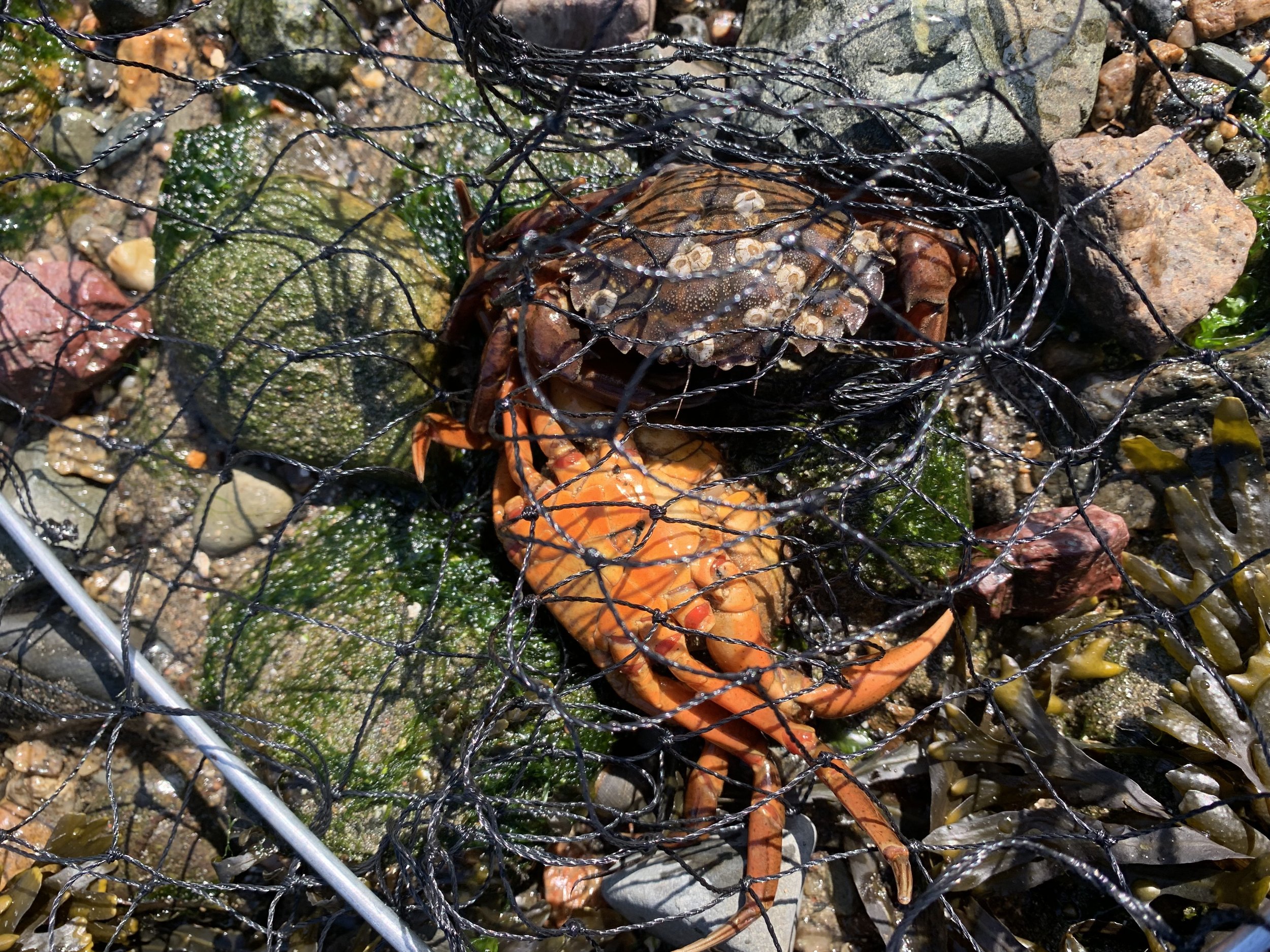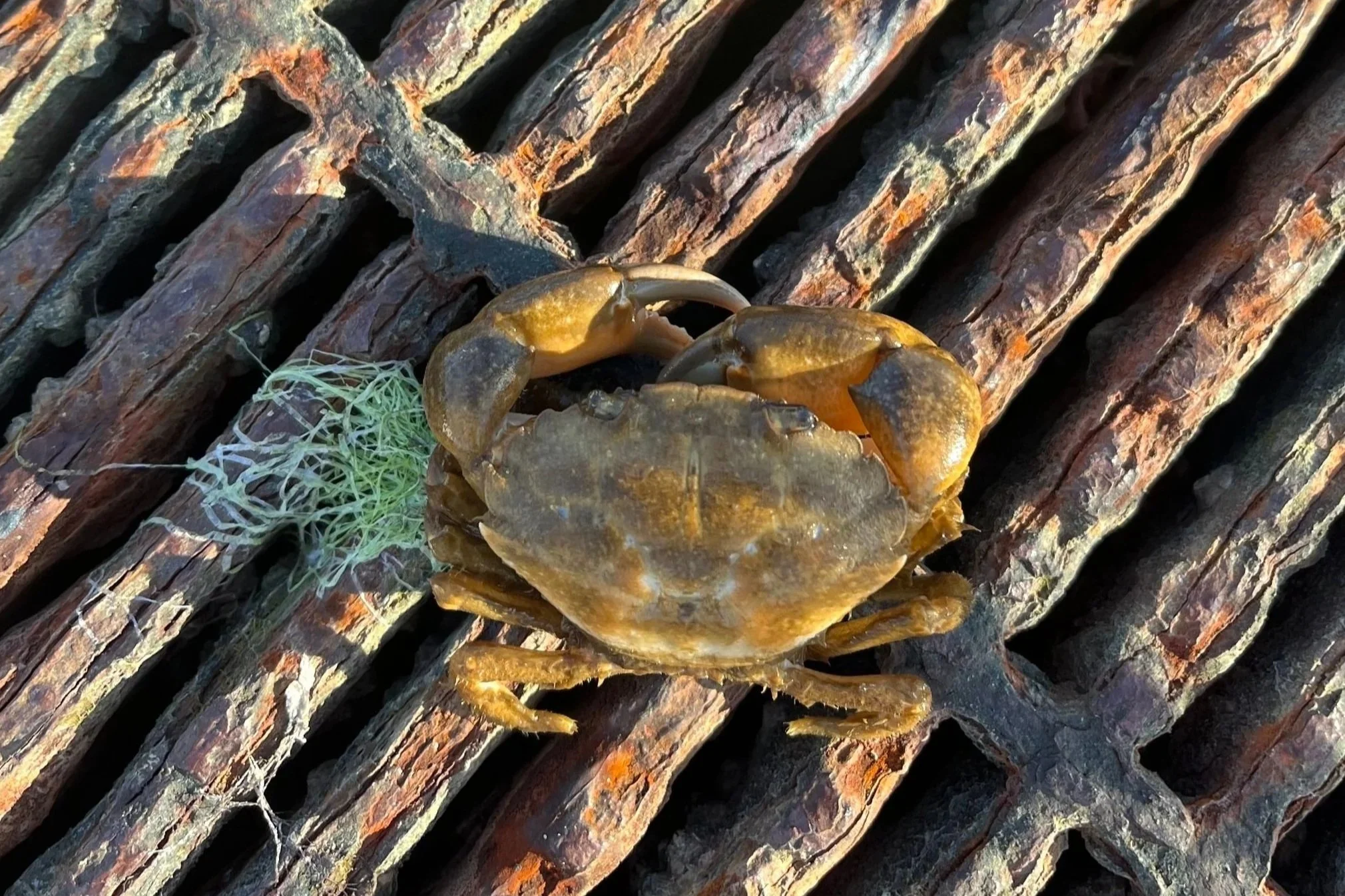How to Trap Your Own Green Crabs
Trapping your own green crabs is a breeze if you know where to look and have the right supplies. This guide covers the best way to trap green crabs as a recreational trapper without a boat or professional gear. Interested in trapping commercially? Check out our Harvester Hub and Harvester Advisory Network for free resources, events, and networking opportunities.
Step 1: Check to see if you need a letter of authorization or a special permit
Each state regulates commercial and recreational green crab harvest differently.
For example, in Massachusetts, you’ll need a letter of authorization from the DMF to trap green crabs recreationally. The state uses this letter of authorization to track who is recreationally harvesting green crabs and applies to recreational and commercial trappers. Follow the steps on this page to obtain the letter. Other states, such as Connecticut, require a Marine Waters Finfish License to trap recreationally.
Make sure to check your state and town regulations before trapping green crabs. Generally, green crab regulations are much stricter on the West Coast and commercial harvest is generally prohibited. In Washington state, green crabs can only be harvested in coordination with monitoring and mitigation efforts.
Step 2: Get a Trap (Optional)
While we’d have different advice for commercial trappers, we recommend recreational trappers start small. This pop-up trap from Jmkcoz is one of our favorites and folds up small enough to fit into a backpack. If you’re looking to soak your trap or catch green crabs more frequently, we recommend investing in a small green crab trap from Ketcham Supply. Make sure you also bring some fishing rope for your trap to retrieve it!
Alternatively, if you find the right spot, you can forage for green crabs with a net or your hands. Many New England tide pool environments will be teeming with green crabs. Lift up a few rocks and you’ll start to see them everywhere.
Step 3: Pick Up Some Bait
Green crabs like some strange snacks. We’ve had luck with hot dogs, fried chicken, and mackerel bait. Check out this blog post by Jimmy Elliott to learn more about recommended baits.
Step 4: Find a Harvest Spot
Your local fishing pier could be the perfect spot to trap green crabs! Green crabs like to hang out in areas with spots to hide (think eelgrass, fishing piers, rocky areas). They’re also common in estuarine areas with brackish waters so check out the mouth of small rivers or inlets (as long as it’s permitted).
You can even harvest green crabs at some beaches but keep in mind that the green crabs like hiding spots. Some of our favorite Mass spots to catch green crabs include the Castle Island Fish Pier and Boston Harbor Islands. In Rhode Island, we recommend checking out Rocky Point State Park.
Step 5: Soak the Trap or Forage
Once your trap is loaded with bait and in the right spot, let it “soak” in the water for at least 20 minutes. After 20 minutes, check the trap for any crab activity. If you’ve selected a good spot, your trap might be nearly full after 20 minutes.
You can also forage for green crabs by looking under rocks, in tidepools, and in intertidal areas with eelgrass. Foraging could require a lot more effort, depending on your area and technique. Generally, green crabs that can be foraged in tidepools and on the coastline tend to be a bit smaller than green crabs harvested in 5+ feet of water (based on our observations). Just make sure you’re not collecting native species by accident! Below we step through how to ID an invasive green crab vs. native species in North America.
An invasive European green crab
Illustration by Jeff Adams (Washington Sea Grant)
Step 6: Check the Crabs
The best way to ID a green crab is not by color but by body shape and distinctive markings. Green crabs are not always green and can come in every color of the rainbow (even purple-hued).
Invasive European Green Crab
Look for five spines on either side of the eyes and distinctive spotted dimples to ID a green crab.
On the East Coast of North America, green crabs are often confused with Atlantic mud crabs (Panopeus herbstii). Mud crabs look very similar to green crabs but have four points, rounder claws, and fuzzy legs. Mud crabs are very common in the intertidal zone of the Western Atlantic and have an impressive range that expands from Southern New England to the Gulf of Mexico and the Caribbean. Check out this guide for more information on Panopeus herbstii (Atlantic mud crab).
On the West Coast of North America, green crabs have been confused with native kelp crabs (Pugettia producta and Pugettia gracilis). Kelp crabs can have “five points” on both sides of the eyes and be greenish in color, but have a very distinctive body shape and longer “spider-like” legs. Check out this guide by California Sea Grant to learn more.
Native Atlantic Mud Crab (Back)
Check for fuzzy legs and rounded claws
Native Atlantic Mud Crab (Front)
Check for four points on each side of the eyes
Step 7: Pack Them Up
Like any shellfish, it’s important to keep your green crabs cold as soon as they exit the water. However, you also don’t want them to come in contact with fresh water. We recommend bringing a cooler with sealed bags of ice inside and a layer of seaweed between the crabs and the ice. That way the crabs will stay cool until you’re able to get home and safely pack them in your fridge.
Check out this guide to learn more about safe handling and prep for green crabs.
Step 8: Eat
Once you’ve taken your green crabs home, get cooking! Check out our recipe page for dozens of free recipes and tutorials from green crab roe butter to green crab martinis.






